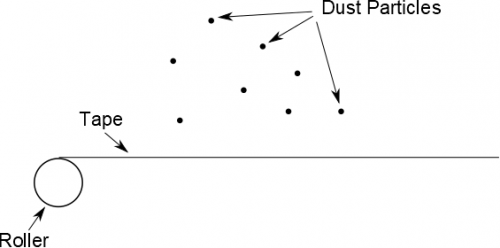Project 3
Project 3A: Charge the Line
You have become trapped in the town of Lakeview. The town and surrounding landscape are under a constant barrage of storms. Not only are people being struck by lightning within the town but any vehicle or person trying to leave the city limits of Lakeview are instantly struck by lightning. The number of deaths due to lightning strikes in Lakeview in one week is larger than the amount the whole world has seen in the last 5 years. Jo Harding, a crazy local scientist who has had a few run-ins with storms before has an idea of putting up giant metal T's, with the base of the T inserted into the ground to try and stop the townspeople from being struck with lightning. Jo wants the base of the T to be made of wood and the horizontal top of the T to be a metal. Mayor Rachel Wando is up for reelection and is willing to listen to any ideas to stop the rising death toll but ever since the lightning storms started she has been in non-stop meetings in which electric fields are being constantly talked about and is becoming very concerned about what the electric fields would be like for these T-shaped objects. Rachel reaches out to her friends at the storm chaser HQ for a model of what the electric field will be for one of these T's after it has been struck by lightning. The code below is the beginnings of your teams work on modeling the electric field from the giant T.
## Creating the scene for the code to run in
scene.range = 2
## Constants
TotalCharge = 15 #C
pointcharge = TotalCharge/7
k = 9e9
vscale = 1e-4
## Objects
charge1 = sphere(pos=vec(-3,0,0), Q=pointcharge, color=color.red, size=5e-1*vec(1,1,1))
charge2 = sphere(pos=vec(-2,0,0), Q=pointcharge, color=color.red, size=5e-1*vec(1,1,1))
charge3 = sphere(pos=vec(-1,0,0), Q=pointcharge, color=color.red, size=5e-1*vec(1,1,1))
charge4 = sphere(pos=vec(0,0,0), Q=pointcharge, color=color.red, size=5e-1*vec(1,1,1))
charge5 = sphere(pos=vec(1,0,0), Q=pointcharge, color=color.red, size=5e-1*vec(1,1,1))
charge6 = sphere(pos=vec(2,0,0), Q=pointcharge, color=color.red, size=5e-1*vec(1,1,1))
charge7 = sphere(pos=vec(3,0,0), Q=pointcharge, color=color.red, size=5e-1*vec(1,1,1))
charges = [charge1, charge2, charge3, charge4, charge5, charge6, charge7]
## Calculation Loop 1
E = vec(0,0,0)
point = vec(0,0,0)
for c in charges:
r = point - c.pos
field = arrow(pos=point, axis=vscale*E, color = color.cyan)
## Calculation Loop 2
x = -5
dx = 0.5
xmax = 5
while x<=xmax:
theta = 0
dtheta = 0.1
R = 0
while theta < 2*pi:
E = vec(0,0,0)
point = vec(x, R*sin(theta), R*cos(theta))
field = arrow(pos=point, axis = E*vscale, color = color.green)
theta += dtheta
x+=dx
Complete the program above to first represent the total electric field just to the right and left of the line of charges. Then, calculate the total electric field surrounding the line of charges.
Learning Goals
- Understand what a list (or an array) does in the code and why you would want to use one
- Understand how a “for” loop works and how it is similar/different from a “while” loop
- Make a model of a line of charge using point charges and be able to describe how you would improve your model
- Use superposition to calculate and visualize the electric field around a line of charge
Project 3B: StickyStuff and the Dust Particle
Adhesive tape is manufactured by repeatedly rolling and unrolling large sheets of plastic, which can cause there to be a charge on the surface of the tape. Why this important you may ask? Trapped in the town of Lakeview, S.P.A.R.T.A.N force has been called to the premises of StickyStuff Corporation. StickyStuff Corp has been tasked with producing a special type of adhesive tape to be used on a new top-secret spacecraft called Artemis 13. Unfortunately, there has recently been a dust problem in the manufacturing plant. Dust particles (on average, charge=0.802∗10−14C, m=5.5∗10−8g) have been accumulating on the tape as it rolls through the assembly line. The problem has been isolated to a single roller, which operates for 10 seconds at a time at a power of 100 watts (where 1 watt = 1 J/s). Using your handy-dandy-super-extender tape measure, you find that exactly 30 m of tape passes over the roller during each 10 second time period. Your team needs to determine where to put a fan and how much force the fan needs to exert on each dust particle, such that the fan blows away any dust that may be attracted to the tape. The tape must be in excellent condition before being used on the spacecraft. From your adhesive engineering education, you have access to a table that you think may help.
(There's actually a pretty cool “How it's Made” video here if you have time at the end.)
Learning Goals
- Create an analytic model for a line of charge
- Be able to explain how you set up each part of the integral, dQ, r, limits, etc.
- Explain how you used superposition in your solution
- Understand how surfaces become charged (particularly as an insulator in this case)
